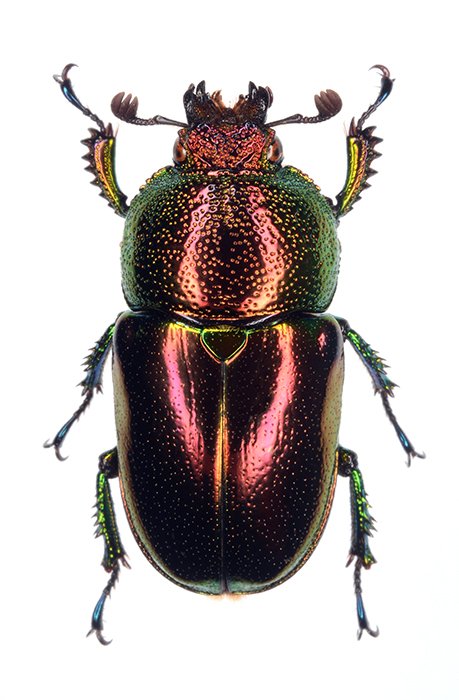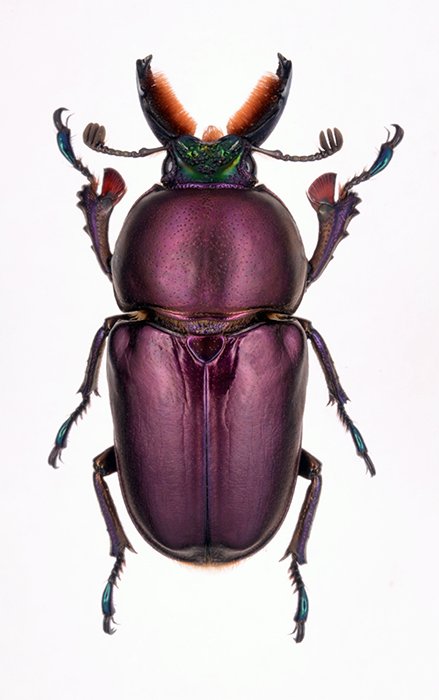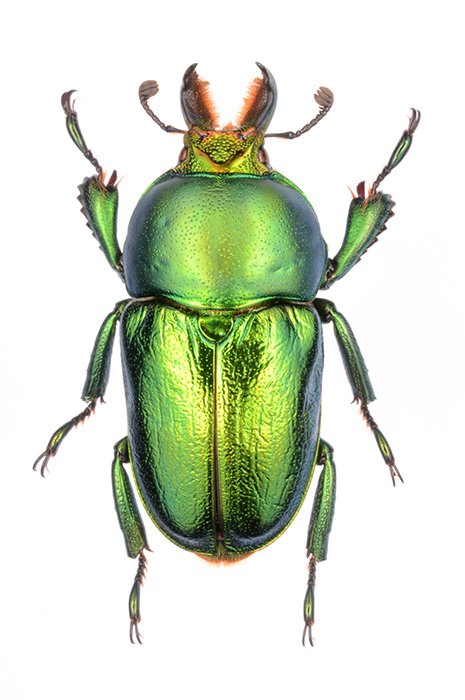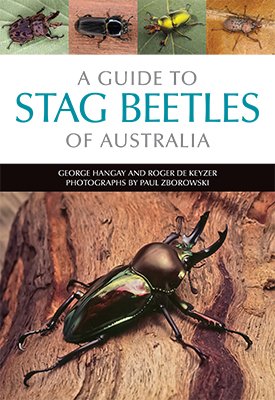Beetle baubles: Australia’s stag beetles

ABOUT 1400 species of stag beetle (family Lucanidae) have so far been scientifically described and named worldwide. Of these, 95 occur in Australia, including some of the most spectacular species. Many, however, lead cryptic lives.
Their grub-like larvae chew away quietly in or under fungus-riddled dead logs on forest floors, where they pupate and eventually turn into attractive adults. These often stay hidden under the logs, males venturing out in the open only when looking for mates.
The adults of many species can’t fly and don’t eat, surviving on reserves built up during their larval lives, which may be just enough to see them through until they mate. But not all stag beetles’ lives are the same.
Some, including quite a few pictured here, can fly after they emerge as adults and feed on ripe, soft fruit, the oozing sap of wounded trees or nectar of some flowers.
1. Lamprima latreillii (blue female)
16–24mm

(Image Credit: Paul Zborowski)
As for all Lamprima, this species develops in decaying wood infested with white rot-producing fungi. Larvae live in fallen logs, preferring eucalyptus but also in other
rainforest timber if white rot is present. This blue form is usually found in northern Queensland, especially on the Atherton Tableland.
2. L. latreillii (red female)
16–24mm

(Image Credit: Roger de Keyzer)
Lamprima adults are good flyers that feed on flowers of trees and shrubs and may gather on plants thought to emit an odour attractive to both sexes. This red form is more common than blue in females. Beetle breeders may add substances to food to achieve unusual colourations.
3. L. latreillii (male ‘mandibu-laris’ form)
18–32mm

(Image Credit: Paul Zborowski)
A species from the Herbert River area in Queensland described in 1885 as L. mandibularis is now thought to have been a male L. latreillii. Note its huge mandibles. Once common on the Atherton Tableland, it’s now rare in the wild due to habitat destruction.
4. Lissapterus obesus (major male)
28–42mm

(Image Credit: Roger de Keyzer)
Lives in drier rainforests in the western Great Dividing Range, from northern NSW to southern Queensland, above 950m. Preferred habitat is in or under logs on the forest floor, where larvae develop. Flightless adults emerge December–January, moving slowly and seeking mates.
5. Lamprima aurata (purple male)
14–32mm

(Image Credit: Roger de Keyzer)
This is a purple form but the golden stag beetle’s colour ranges from red/golden-red to near-black. Found in eastern NSW, ACT, Victoria and Tasmania, like other Lamprima it breeds in decaying logs, mainly eucalypts, but also she-oaks (Casuarina, Allocasuarina) and even introduced willows.
6. Lamprima aenea (male)
27–30mm

(Image Credit: Roger de Keyzer)
Green is this species’ typical colour; variations include dark bronze and even blue. It’s Norfolk Island’s only endemic stag beetle but, due to destruction of its forest habitat, it has become rare in the wild. However, there are good numbers with breeders – mostly in Taiwan and Japan.
7. Phalacrognathus muelleri (major blue male)
24–75mm

(Image Credit: Roger de Keyzer)
The describer of the king stag beetle in 1885 called it “the most beautiful insect I have ever seen”. It’s the rock star of stag beetles due to its vivid colours (this image shows an uncommon blue form), elegant shape and rarity. Found in north-eastern Queensland.
8. Hoplogonus simsoni (major male)
13–32mm

(Image Credit: Paul Zborowski)
All three species in this genus live in north-east Tasmania’s wet forests and are endangered. Larvae feed and develop in rotten logs for up to two years before pupation commences. Emerging adults live under fallen timber on the forest floor and in leaf litter.
Want to learn more about Australia’s stag beetles? Pick up the new book by George Hangay and Roger de Keyzer, with photographs by Paul Zborowsk HERE.

READ MORE:




